Tuning the 2.5l Swap
If you look in our dyno section, you will find the graphs from the various cars we have tuned. One thing you will notice is the difference in curves between the 2.0 and the 2.5 motors. See below:
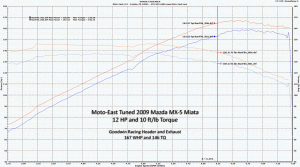
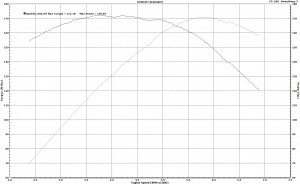
What you will notice between these two is that the 2.5 clearly appears to run out of breath at the top. The torque advantage is clear, and the area under the curve will not disappoint; but once you break 6,000 RPM the fun slows down. From a practical standpoint this is not necessarily a deal breaker. Bear in mind, the stroke of the 2.5 motor has the rods at fairly radical angles, and at above 7,000 RPMs they approach some questionable territory. However, few do engine swaps like this to just shift their torque curve, so some additional work is warranted.
The road to 185 WHP with such a broad torque curve was no easy task, and in this case involved many hours of road tuning and dyno tuning. The first baseline was on the stock 2.0 tune. Clearly room to improve. With our tuning kit and tune, we were able to increase that significantly.
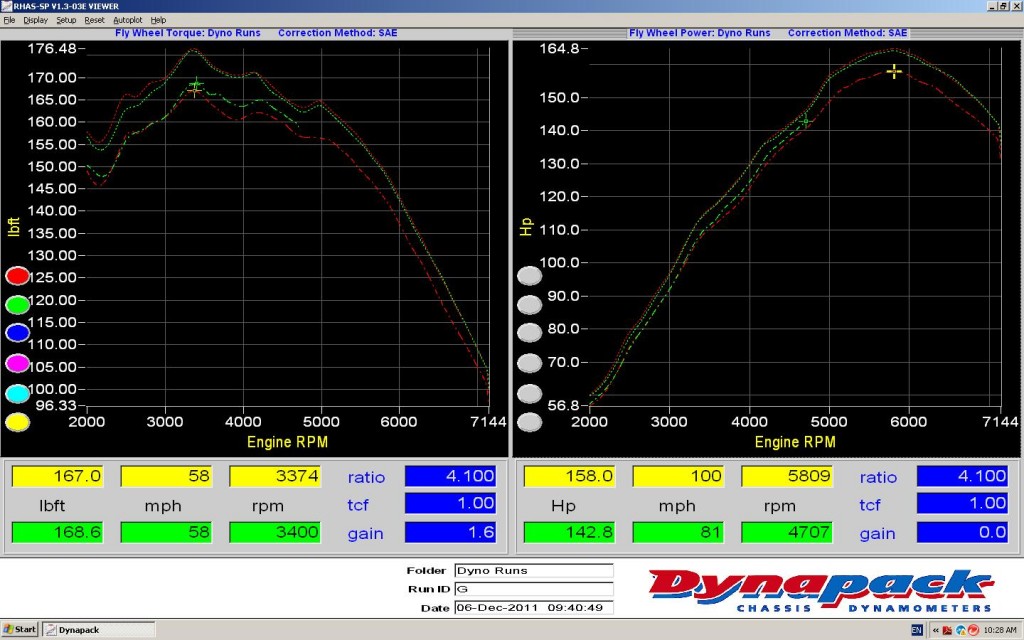
Here we gained nearly 10 hp just by optimizing the timing for the 2.5 compression ratio, and smoothed out the fuel curve a bit as well to get more even power. The curve below really highlights this, and note the starting horsepower (standard tune) compared to the final tuned WHP. The gains are seen everywhere, and here we can see torque peaks as well (note that they appear severely amplified due to the scaling of the torque plot). Note that here too, we see the big drop off in HP after 6,000 RPM.
The customer in this case went ahead and did some light headwork, along with a set of mild street cams. These retain the VVT, which gives us control of the intake cam retard. After a few rounds of street tuning we were able to get a good baseline for the timing maps, and got the AFR smoothed out for consistency. With an ODBII datalogger (Auterra DashDyno,) we can easily see that we are flowing much more air on the top-end.
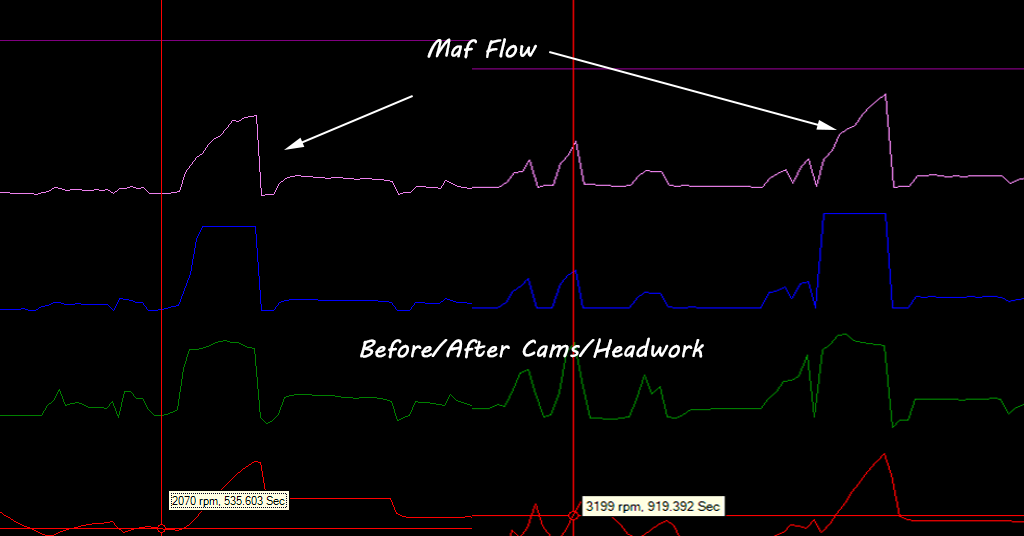
The next step is the dyno. With our experience street tuning, the ultimate power is not something that is expected to improve much. However, the dyno allows us to fine tune portions of the power band that are hard to hit on the street, and smooth out the torque curve. We can also adjust timing with greater precision and gain a bit more headroom for safety since often times the timing may need to be further below the knock sensor threshold on normally aspirated setups.
This is the before dyno, and two runs back to back after dyno tuning. You can see we filled some of the gaps, and were able to get a few more HP out of it by optimizing the AFR and timing. Fine tuning the VVT allowed us to smooth things over some, but again, here we see the distorted peaks due to the scaling of the graph. The hp curve shows it is actually much smoother.
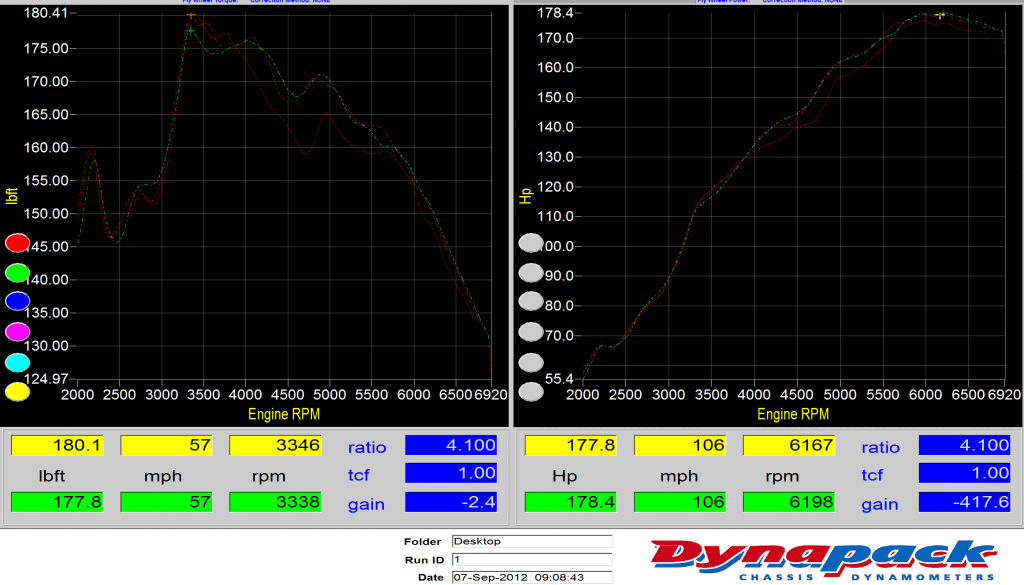
And finally, we have the outcome from before we got our virtual hands on it–to after. These results were achieved with our basic tuning hardware, a few hours of tuning, and from over 10,000 miles away! The fact that this is a stock bottom end running relatively low compression, leaves much room still with some high compression pistons and some valvetrain work. However, for the cost and reliability, this is by far more than adequate for a 2,400lb car!
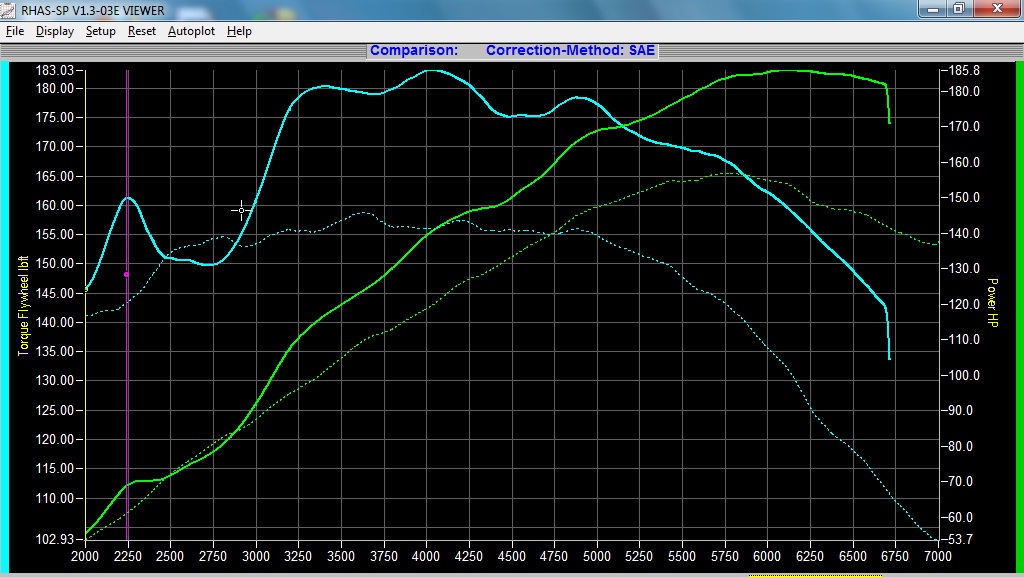

Leave a Reply
You must be logged in to post a comment.